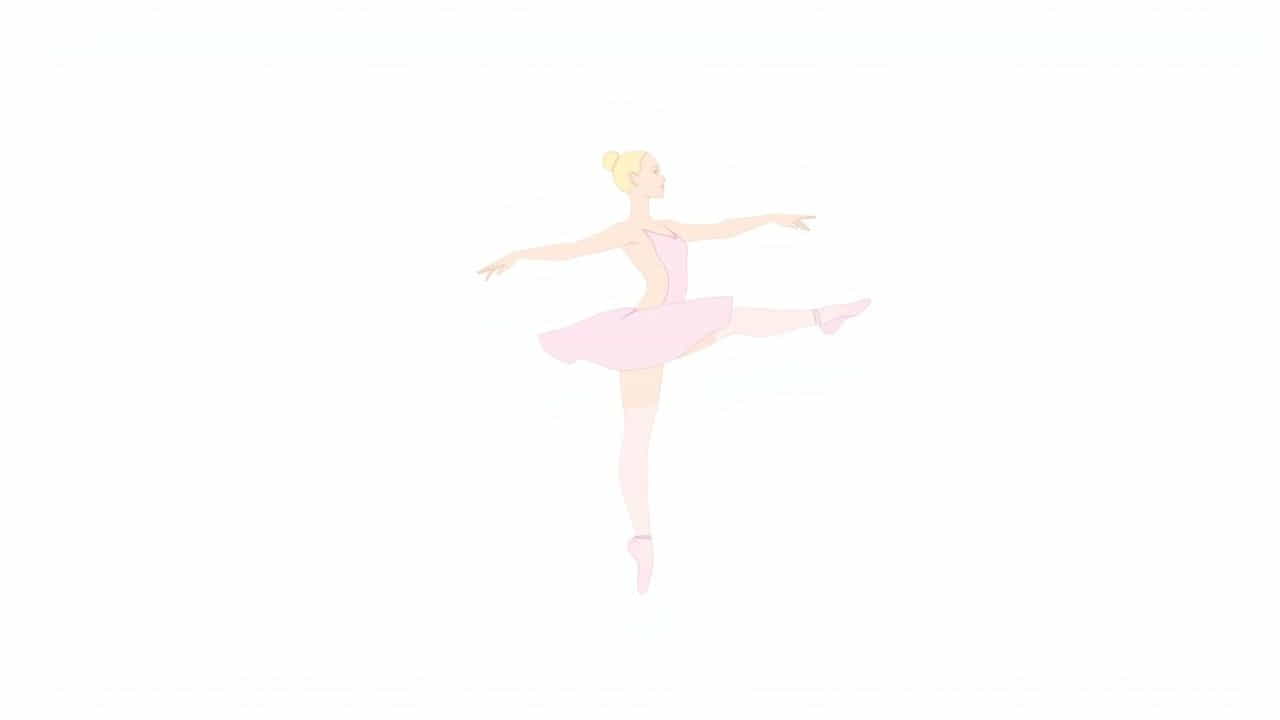Adagio is one of the most elegant and expressive components of ballet. It showcases a dancer’s strength, balance, and fluidity through slow, controlled movements. Whether performed in a solo, duet, or group setting, adagio requires a high level of grace, technique, and control.
In this topic, we’ll explore what adagio means in ballet, its purpose, key movements, and how dancers train for it.
1. What Does Adagio Mean in Ballet?
The word adagio comes from Italian, meaning at easeâ or slowlyâ. In ballet, adagio refers to a series of slow, controlled movements that require exceptional balance, strength, and precision.
Adagio can be performed in two main contexts:
-
In Ballet Class: As part of the center practice, where dancers work on slow movements to build strength and control.
-
On Stage: Often seen in pas de deux (partnered dances) and solos, highlighting a dancer’s poise and fluidity.
2. The Purpose of Adagio in Ballet
Adagio plays a crucial role in ballet training and performances. It helps dancers develop:
â Strength and Control
Slow movements require muscle engagement and core stability to maintain balance and extend movements with precision.
â Elegance and Grace
Adagio movements emphasize fluidity and seamless transitions, showcasing a dancer’s artistry.
â Balance and Flexibility
Since dancers hold positions for extended periods, adagio helps improve balance, coordination, and flexibility.
â Musicality and Expression
Performing to slow music allows dancers to connect with the rhythm and emotions of the piece, making their performance more expressive.
3. Key Movements in Adagio
Adagio consists of several essential ballet movements that test a dancer’s skill and endurance.
â Développé
A movement where the working leg is drawn up and extended smoothly into the air. This movement requires great control and flexibility.
â Arabesque
A classic ballet pose where one leg is extended behind the dancer while maintaining an elegant upper body posture.
â Attitude
Similar to an arabesque, but the lifted leg is slightly bent at the knee, creating a more rounded shape.
â Penché
A deep arabesque where the upper body leans forward while the extended leg lifts higher, demanding extreme balance and flexibility.
â Rond de Jambe en l’Air
A circular movement of the leg while held in the air, requiring coordination and smooth transitions.
â Grand Adagio
A sequence of slow, extended movements that demonstrate a dancer’s full range of control and artistry.
4. Adagio in Pas de Deux (Partnered Ballet)
In classical ballet, adagio is an essential part of pas de deux (duets between male and female dancers). It typically appears at the beginning of a pas de deux and includes slow lifts, balances, and extensions.
â The Role of the Male Dancer
-
Supports the female dancer in lifts and balances.
-
Ensures smooth transitions and graceful partnering techniques.
â The Role of the Female Dancer
-
Maintains elegant lines while performing slow extensions and balances.
-
Requires strong core control to hold positions while being lifted.
Famous ballet pas de deux with adagio sections include:
-
Swan Lake – The White Swan Pas de Deux
-
The Nutcracker – The Grand Pas de Deux
-
Giselle – Act II Pas de Deux
5. How Dancers Train for Adagio
Training for adagio requires dedication and discipline. Ballet dancers focus on strength, balance, and flexibility to perfect slow movements.
â Strength Training
-
Core exercises (planks, sit-ups) to maintain balance.
-
Leg workouts (plies, tendus, and resistance band training) for controlled extensions.
â Balance Exercises
-
Holding arabesques and développés for longer durations.
-
Practicing on relevé (tiptoes) to improve stability.
â Flexibility Work
-
Daily stretching routines for leg extensions.
-
Yoga and Pilates for improved muscle control.
â Musicality Practice
-
Listening to classical ballet music to improve timing.
-
Learning to express emotion through slow movements.
6. Famous Adagio Performances in Ballet
Many classical ballets feature iconic adagio sequences that showcase the beauty of slow, controlled movements.
â The White Swan Adagio – Swan Lake
One of the most famous adagio sequences, where Odette gracefully moves through slow arabesques and lifts, expressing vulnerability and elegance.
â The Grand Pas de Deux – The Nutcracker
A breathtaking duet in which the Sugar Plum Fairy and her partner perform smooth, flowing movements that embody the magic of ballet.
â The Balcony Scene – Romeo and Juliet
A romantic adagio sequence where the dancers convey deep emotion through gentle lifts and expressive gestures.
7. Common Challenges in Adagio and How to Overcome Them
Mastering adagio is not easy. It requires patience, dedication, and constant refinement. Here are some common challenges and solutions:
â Struggling with Balance?
â Practice slow relevés and single-leg holds to improve stability.
â Difficulty Controlling Movements?
â Focus on engaging core muscles and using controlled breathing.
â Lack of Flexibility?
â Incorporate daily stretching routines and dynamic warm-ups.
â Weak Upper Body for Lifts?
â Male dancers should work on arm and shoulder strength with resistance training.
8. Why Adagio is Essential for Every Ballet Dancer
Adagio is a true test of control, artistry, and technique. It helps dancers develop:
â Strength and endurance for complex movements.
â Graceful transitions between ballet steps.
â Emotional expression in performances.
â Precision and control, which are essential for all aspects of ballet.
Whether you’re a beginner or a professional, mastering adagio will enhance your overall ballet technique and elevate your performance quality.
Adagio in ballet is much more than just slow movementsâit is an art form that requires discipline, strength, and emotional depth. From ballet class exercises to stunning stage performances, adagio showcases the dancer’s ability to move with grace and control.
By practicing balance, flexibility, and musicality, dancers can master adagio and bring elegance to every performance. Whether solo or in a pas de deux, adagio remains one of the most captivating elements of ballet, embodying the timeless beauty of this classical dance form.
